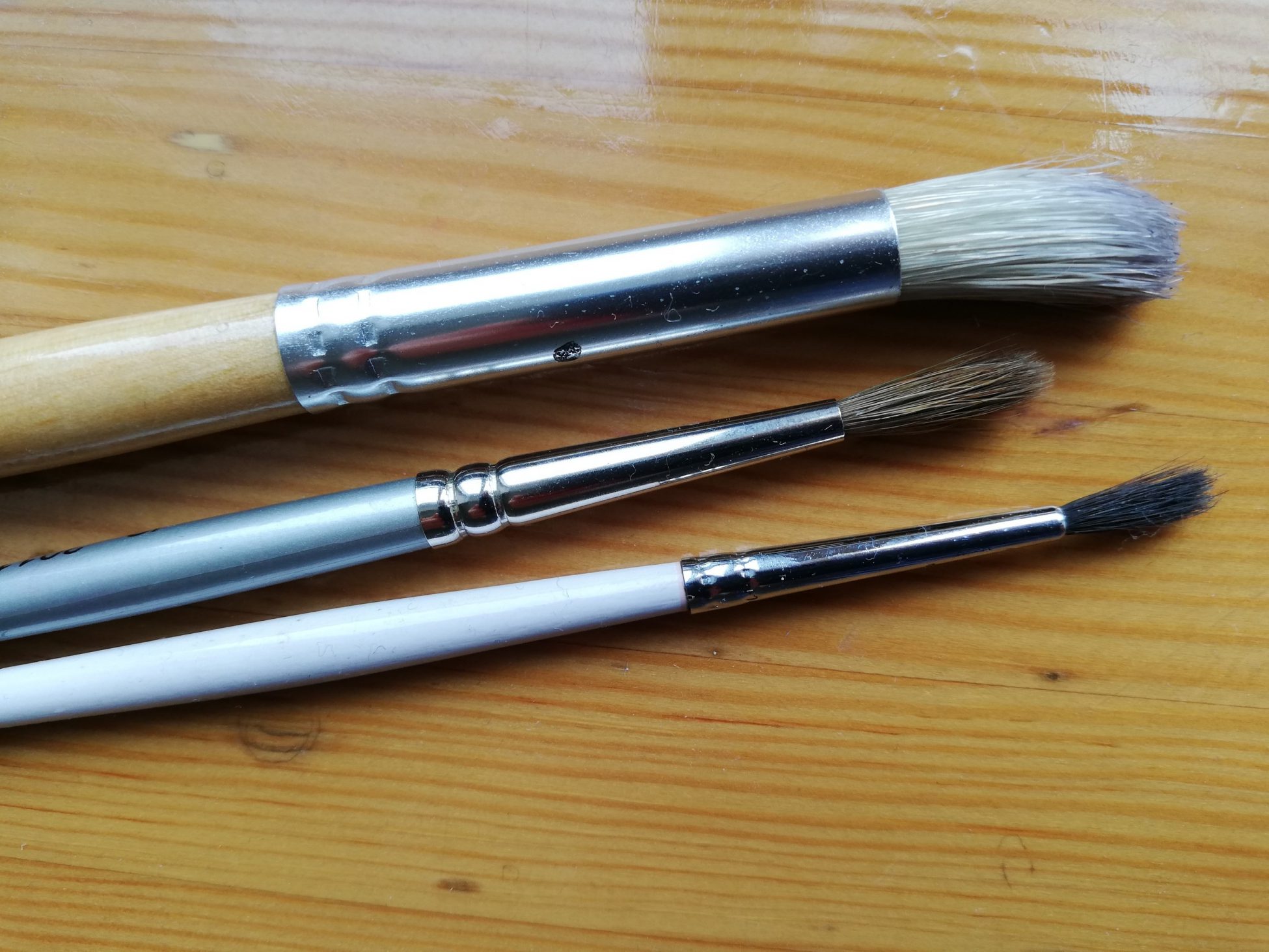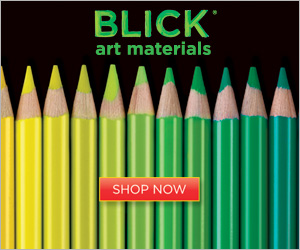The head of a brush may be manufactured of synthetic or natural materials.
Modern-day polyester filaments differ greatly in performance – you never know what they’re capable of until you try to use them. The behavior of natural material is more predictable. Each animal hair type has specific characteristics.
The Most Common Soft Brushes
Soft hairs spread watercolor easily. They are good to make both smooth strokes and detailed marks.
Among the artists who prefer oil paints, such brushes are valued for their flexibility.
Sable
So-called Kolinsky red sable (a Siberian mink-like weasel, in fact) is considered to be a high-class material – it maintains shape very well and distributes the medium evenly.
Like the other professional art supplies, the brushes should be sought in specialist stores.
Walking along shelves, you’ll probably see the label Black Sable on some brush handles. The grayish ‘sable’, coming from Russian Fitch tails, has a bit coarser texture.
There is also sabeline – please mistake it neither for weasel nor for fitch. The term refers to ox hair dyed red.
Ox
Hairs growing in cattle’s ears in many respects resemble much more rare weasel fur.
The strong silky hair only lacks a fine tip: it works better when you are painting something relatively large. That is the reason why ox brushes are usually available in a flat shape.
Squirrel
Squirrel natural filaments impress with softness, but they are too thin. The thinnes don’t allow them to be springy – however, if the head of a brush is big enough, the mentioned drawback becomes inappreciable.
Since the animal’s hairs lose their proper shape under the weight of heavy oil paint, I would recommend using the brushes for wash techniques.
Pony
Pony hair is the cheapest material in its category.
Do you remember the low-priced sets of honey watercolor paints, which you may have used during childhood? Maybe some of them included a brush with a bright plastic handle. Well, its head was likely made of fluffy pony hairs.
They don’t form a good point, however, this material is resilient and durable.
Camel
I’ve already told you about sable, that isn’t sable at all. I have to surprise you one more time. Camel brushes bear no relation to the ungulate with a humped back.
They contain squirrel, ox and pony hairs or a blend of these filaments. Their features, consequently, vary a little.
You can know only one thing for sure: ‘camel’ is primarily intended for aquarelle.
Stiff Bristle: Advantages And Disadvantages
Stiff brushes push paint around and make rough irregular marks – for example, when you are applying the oil impasto technique or creating the texture of sand with a water-soluble media.
The best material for the coarse heads is hog bristle. The hairs have peculiar V-shaped ends (‘flags’), thanks to which the amount of held paint increases significantly.
Even selected hog brushes are affordable.
A few words in conclusion…
My personal favorite is a squirrel paired up with an ox, but I don’t want to impose my views on you: сhoosing art tools is always a matter of personal preference.
If you are a beginner, buy one or two brushes of each type just to try them. By the way, experimenting with several brushes will be good practice for you.
*If you buy something through the banner I will earn a commission, at no cost to you. More info


